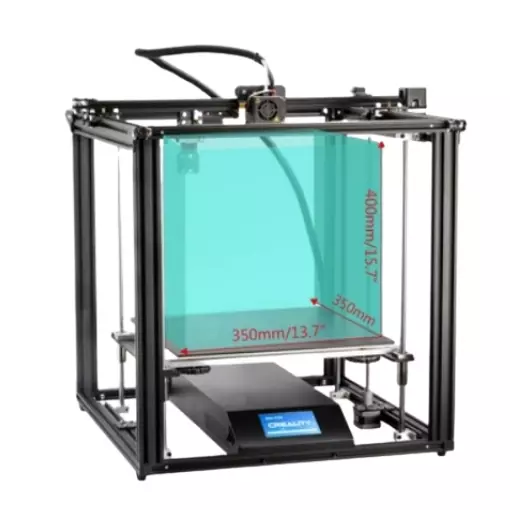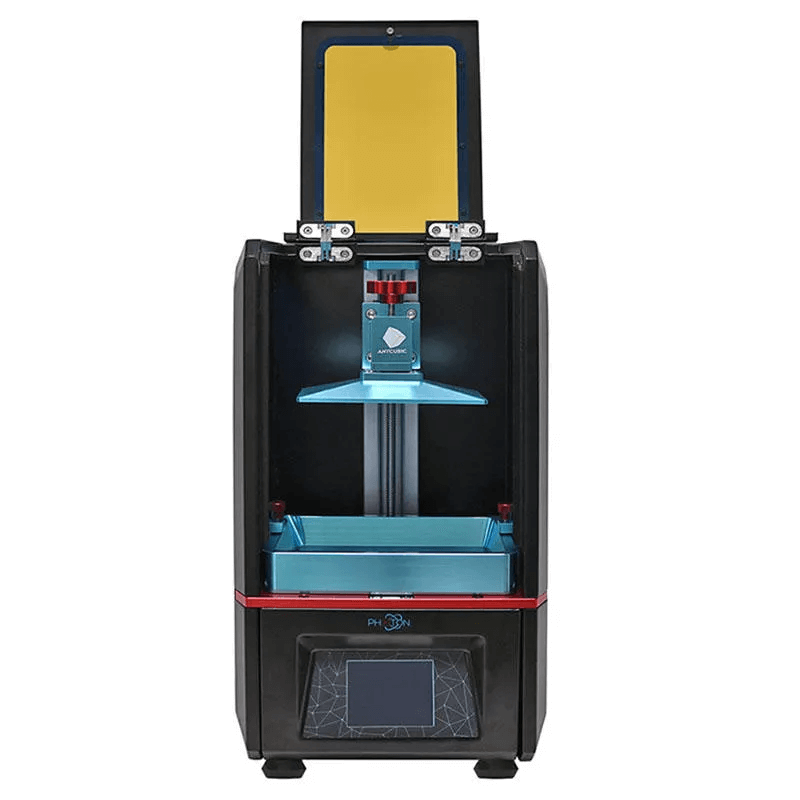Compare Ender 5 Plus vs Ender 3 S1 vs Photon
Comparison between the best 3D printers
Choose the best 3D printer at the best price. The cheapest 3D printers are here.
Buy a 3D printer here with 3D Fila.
 |
 |
 |
|
| Model | Ender 5 Plus[BUY Ender 5 Plus] |
Ender 3 S1[BUY Ender 3 S1] |
Photon |
| Printing Material | Filament | Filament | Resin |
| Estimated price | $599,00 | $399,00 | $100,00 |
| Fabricante | Creality 3D | Creality 3D | Anycubic |
| Release Year | 2019 | 2021 | 2019 |
| Print Volume [mm] | 350x350x400 | 220x220x270 | 65x115x155 |
| Printer Size [mm] | 632x619x666 | 455x490x625 | 220x200x400 |
| Weight [kg] | 18,2 | 9,1 | 7,2 |
| Power Loss Recovery | YES | YES | NO |
| Maximum Resolution [mm] | 0,1 | 0,05 | |
| Processor | 32 bits | ||
| Display | Touchscreen TFT 4,3'' | Display 4,3'' | Touchscreen TFT 3,5'' |
| Power Supply | 24V / 504W | 40W | |
| Connectivity | SD / USB | SD / USB | USB |
| Operating systems | Windows, Mac, Linux | Windows, Mac, Linux | Windows, Mac, Linux |
| Date of registration in the system | 2021-04-14 | 2023-03-28 | 2021-04-15 |
| Release date | 2019 | 2021 | 2019 |
| Extra features | The Ender 5 Plus offers a large print volume (350x350x400 mm) and fast assembly. It includes a BLTouch sensor, but with range limitations. It stands out for its dimensional accuracy, although it requires adjustments to the slicer settings. Despite the noise, its integrated design saves space, and includes features such as a filament sensor and power resumption. Ideal for large projects, it requires refinement in the settings for high-quality prints. | The Creality Ender 3 S1 printer stands out for its easy assembly and quiet operation. It has automatic bed leveling and a direct drive system, providing high-quality prints. The design is sleek, with flat cables in mesh sleeves and a magnetic bed. The Creality Sprite extruder is lightweight and developed in-house, supporting a maximum nozzle temperature of 260 degrees. It includes a filament run-out sensor and power loss recovery, with a dual Z-axis for greater support and stability. The build plate is flexible steel with PC coating, and the printer supports a wide variety of filaments. | The Anycubic Photon DLP is a resin 3D printer that stands out for its affordability and quality. It uses DLP (Digital Light Processing) technology to cure resin layers with precision, offering resolution of 25-100 microns. Its build volume is 115 x 65 x 155 mm, suitable for modest-sized projects. It includes a 2.8-inch touchscreen, USB and SD card connectivity, and a carbon filter to mitigate odors. It is notable for generating efficient support structures through its custom slicing software. Although it requires care in resin handling and post-processing, it is an excellent option for beginners and professionals who want to explore resin 3D printing with high resolution and ease of use. |
| Support for multiple colors and materials (AMS and CFS) | NO | NO | NO |
Notes * |
|||
| Cost-benefit | 6 / 10 | 7 / 10 | 6 / 10 |
| Hardware | 2 / 10 | 2.4 / 10 | 0 / 10 |
| Screen | . | . | . |
| Print volume | 4 / 10 | 3 / 10 | 3 / 10 |
| Performance | 1 / 10 | 1 / 10 | 0 / 10 |
| [BUY Ender 5 Plus] | [BUY Ender 3 S1] |
Conclusion |
| In conclusion, the comparison of the three 3D printers reveals distinct advantages and use cases for each model, allowing potential buyers to make an informed decision based on their specific printing needs and budget. The **Ender 5 Plus** is an excellent choice for those requiring a large print volume and robust capabilities, catering particularly to users who engage in larger projects. Its high-resolution printing, power loss recovery, and dimensional accuracy make it suitable for serious hobbyists and professionals alike. However, its higher price may not be justifiable for casual users or those with smaller projects. The **Ender 3 S1** strikes a balance between performance and affordability, making it a strong contender for hobbyists and beginners. Its features, such as automatic bed leveling and a flexible build plate, enhance usability without sacrificing print quality. The price point makes it accessible for users looking for a reliable yet versatile printer without the need for a large scale. Conversely, the **Anycubic Photon**, while the most affordable option, serves a different niche in the 3D printing landscape. It specializes in high-resolution resin printing, ideal for detailed and complex models. However, the smaller build volume and additional care required for resin handling may limit its appeal to those primarily interested in filament-based printing. Ultimately, the choice depends on individual needs: for large-scale projects, the Ender 5 Plus excels; for a balanced, user-friendly experience, the Ender 3 S1 is a strong option; and for intricate, high-resolution models at a budget price, the Photon is a suitable candidate. Each printer offers unique strengths that cater to diverse user preferences and applications in the 3D printing realm. |

